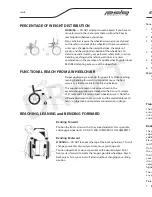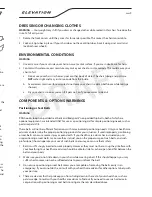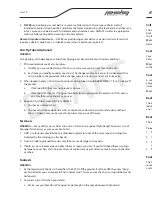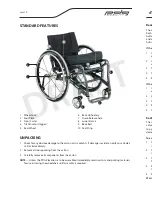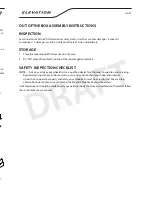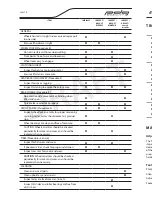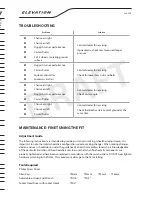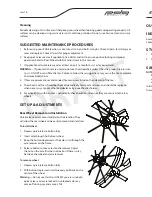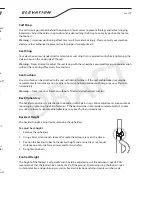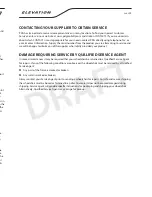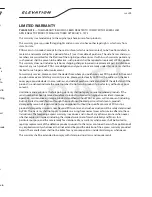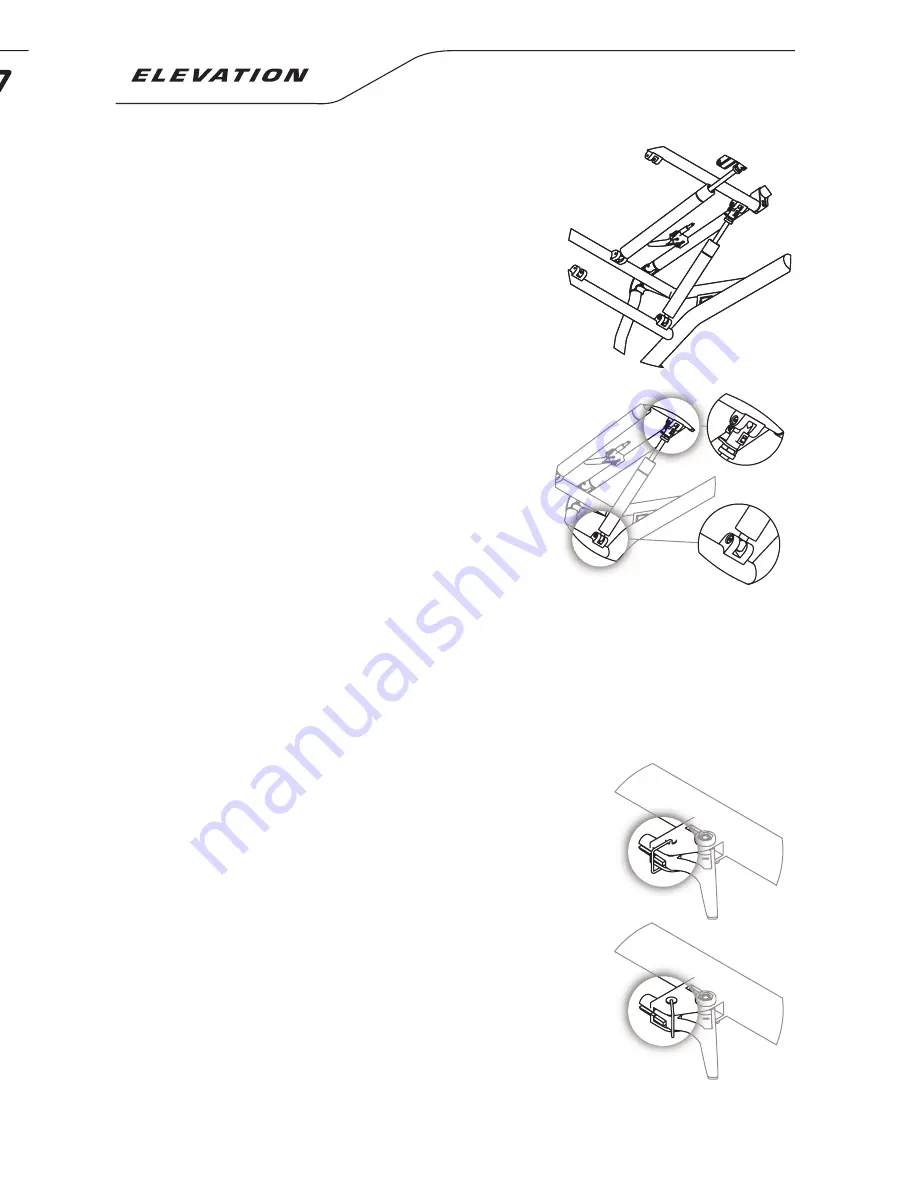
DRAFT DRAFT
page
21
page
8
PERCENTAGE OF WEIGHT DISTRIBUTION
WARNING
— DO NOT attempt to reach objects if you have to
move forward in the seat or pick them up from the fl oor by
reaching down between your knees.
Many activities require the wheelchair owner to reach, bend
and transfer in and out of the wheelchair. These movements
will cause a change to the normal balance, the center of
gravity, and the weight distribution of the wheelchair. To
determine and establish your particular safety limits, practice
bending, reaching and transferring activities in several
combinations in the presence of a qualifi ed health professional
BEFORE attempting active use of the wheelchair.
FUNCTIONAL REACH FROM A WHEELCHAIR
Proper positioning is essential for your safety. When reaching,
leaning, bending forward, it is important to use the front
casters as a tool to maintain stability and balance.
The approximate reach-limit values shown in the
accompanying graph were derived on the basis of a sample
of 91 male and 36 female subject wheelchair users. Note the
diff erence between the maximum and the comfortable reach
limits, a subjective but important consideration in design.
REACHING, LEANING and BENDING FORWARD
Bending Forward
Position the front casters so that they are extended as far as possible
and engage wheel locks. DO NOT LEAN FORWARD OF THE ARMRESTS.
Bending Backward
WARNING
—DO NOT lean over the top of the back upholstery. This will
change your center of gravity and may cause you to tip over.
Position wheelchair as close as possible to the desired object. Point
front casters forward to create the longest possible wheelbase. Reach
back only as far as your arm will extend without changing your sitting
position.
To replace gas springs
1 Position the chair on a solid level surface and secure the chair
using the brakes.
2 Be sure to have the gas spring in the fully extended position.
3 Remove both socket head shoulder bolts from the frame
strut mounts on the upper and lower frames using a 3mm
allen wrench.
4 Remove the cable from the gas spring and re-use on the new
part.
5 Re-install the new gas spring and the socket head shoulder
bolts.
6 Tighten fasteners.
Warning
—Do not bend or stretch the cables that run from
the release lever to the gas springs, as this may release the
springs and move the seat resulting in injury.
Transport
The Elevation is not designed for transport in a vehicle while occupied. When transporting the chair
ensure that the wheelchair is secured to prevent any movement which may result in injury. To reduce the
risk of accidental seat height movement during transport or storage, ensure that the seat is fully lowered
and ensure that the release levers have their safety latches fi rmly placed in the “locked” position .
Real-time seat height: Operating Instructions
The gas springs on your Elevation wheelchair has a real-time seat height
adjustment that is unique in the wheelchair manufacturing industry. In
addition to performing all the functions of a conventional wheelchair, the
Elevation enables the user to make quick adjustments of the wheelchair
seat height to suit the needs of the occupant’s busy day.
During an episode of spasticity, cramps or any other situation that distracts
the user’s attention or causes instability or discomfort, it is recommended
that the user not raise seat height until the episode subsides. Consult
your physician to make sure you do not suff er from any conditions (e.g.
strong contractions, autonomic dysrefl exia, osteoporosis, spasticity, or
compromised hand function) which make operation of and/or sitting at
higher seat elevations potentially harmful.
The seat height should only be adjusted on a fi rm, level surface to avoid
any potential risk of injury (tipping over).
To raise seat
1 Be sure the chair is on a solid level surface and secure it using the brakes.


